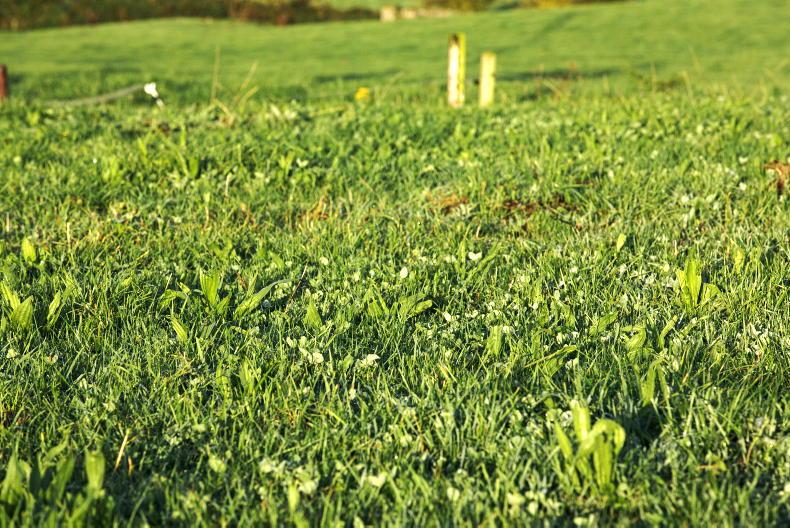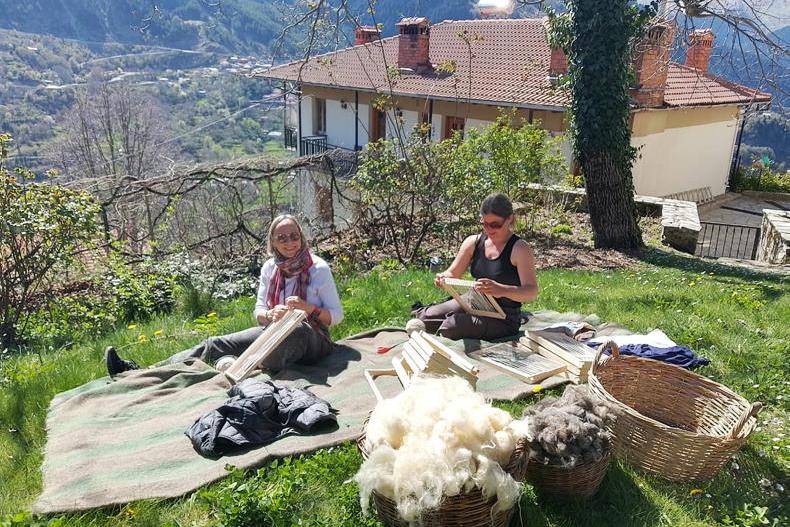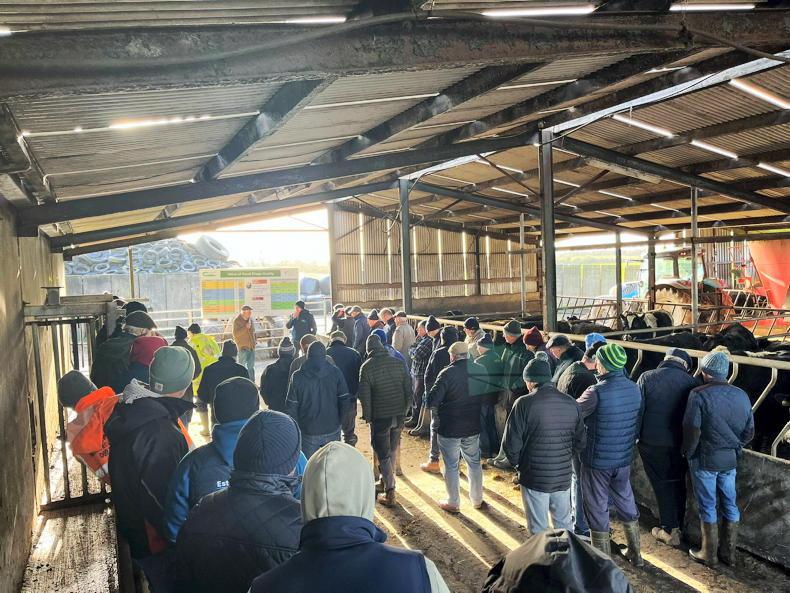As more interest grows in multispecies swards and the new Results Based Environment Agri Pilot Programme (REAP) offers farmers payment for making the switch, it is important to look at the research.
At a recent Agricultural Science Association (ASA) webinar, results from UCD and Teagasc were shared on the latest research into these swards.
Reduced nitrogen fertiliser inputs are often described as one of the main advantages of these swards, but maintaining or improving animal performance is crucial.
Cattle
Research on cattle performance at UCD is in its infancy with the first cattle slaughtered in 2020, but early indications are promising according to Prof Tommy Boland of UCD’s School of Agriculture and Food Science who cautioned that the research on cattle was only a snapshot.
Three farmlets were set up as part of the SMARTSWARD project, one with perennial ryegrass (PRG), another with PRG and white clover and the final sward was made up of multiple species including Timothy, white clover, red clover, ribwort plantain and chicory.
Bullocks grazing multispecies swards had a 20% higher growth rate than bullocks grazing perennial ryegrass in their second year at grass.
Tommy stated that bullocks on PRG and white clover or multispecies swards finished 40kg heavier at the end of the second grazing season and were slaughtered three weeks earlier.
Looking at information on Angus and Hereford heifers, those grazing a six-species mix had a 13% higher average daily gain than those grazing PRG during their second summer at grass.
In the latest research, animals currently grazing at UCD are performing best on PRG and clover and multispecies swards.
Sheep
Trials from 2015 and 2016, where sheep were grazing on their own, examined performance on PRG, PRG and white clover swards, a six-species mix (two grasses, two legumes, two herbs) and a nine-species mix (three grasses, three legumes, three herbs).
The PRG sward received 163kg N/ha/year, while all other mixes received 90kg N/ha/year.
The stocking rate was 12.5 ewes/ha and each had two lambs.
Results of this trial showed that lambs suckling ewes grazing the six-species mix had a 2.4kg higher liveweight gain at weaning.
This indicates that these lambs were either consuming more milk or consuming higher-quality milk up to weaning.
The animals grazing PRG and white clover or the six- or nine-way mix reached their slaughter weight two weeks earlier than those grazing perennial ryegrass on its own.
Tommy explained that this frees up herbage in August, September and October to get ewes into the right condition for the breeding season.
Importantly, if the lambs are on the farm for a shorter period, they are emitting less methane and reducing the carbon footprint of the lamb produced.
Reduced anthelmintic use
Results also showed a 50% decrease in the use of anthelmintics where lambs were grazing multispecies mixes.
Tommy said that the interval from one dose to the next was longer for lambs grazing multispecies swards.
Lambs grazing PRG in these swards needed to be treated every five weeks to control intestinal parasites.
Lambs grazing PRG and clover were treated every six weeks. Those grazing a six-species mix were treated every seven weeks and lambs grazing a nine-species mix were treated every eight weeks.
Tommy stated: “Over the lifetime of those lambs in our production system, we saw that compared to lambs grazing a PRG-only sward, lambs grazing a multispecies sward required 50% fewer drench administrations over their life.
“This is a really important finding in terms of maintaining the efficacy of our anthelminthics that we currently have for controlling intestinal parasites.”
Tommy added that each time we use an anthelmintic the parasite has an opportunity to build resistance to that anthelmintic. Reducing the use of these products can help to maintain the drugs efficacy.
Cattle and
sheep co-grazing
Research at Dowth examined cattle and sheep co-grazing on PRG, permanent pasture (40 to 50 years old), a six-species mix and a 12-species mix.
From these trials, Tommy reported that lambs on multispecies swards had a 24% higher average daily gain than those on PRG or permanent pasture from turnout to slaughter.
There was little difference in performance between the six- and the 12-way mixes.
In this study, beef heifers grazing the six-species mix had a 13% higher average daily gain than animals grazing PRG and permanent pasture during their second summer at grass. No benefit was seen from the 12-species mix.
Management
An important point to remember is these swards require good management. Farmers who are not already managing grass with a good level of efficiency should get the basics right with perennial ryegrass before moving to multispecies swards.
Like any crop, multispecies swards require good soil fertility to grow, so ensuring correct soil pH, phosphorus and potassium levels is essential.
Research has shown these swards can have lower levels of weed infestations than PRG swards, but it is important to tackle weed problems before reseeding.
Future research
Much is still to be learned about multispecies swards. Persistency of the legumes and herbs, as well as rotation length and grazing height are all being investigated, as well as stitching in plants which have faded out of the sward.
Tommy also noted that the economics are currently being looked at to see if the benefits of improved animal performance, reduced fertiliser rates and the reduced use of animal remedies out-weigh the costs of reseeding or stitching in.
Animal performance was improved on multispecies swards in these research trials. Animal remedies were reduced with an increase in the number of species in a sward. In general, mixes, even two-way mixes, resulted in improved performance. More research is needed to get a picture over time. More research is needed into the persistency of these multispecies swards. Economic models are currently being developed to determine if the savings outweigh the costs if regular reseeding is needed.

As more interest grows in multispecies swards and the new Results Based Environment Agri Pilot Programme (REAP) offers farmers payment for making the switch, it is important to look at the research.
At a recent Agricultural Science Association (ASA) webinar, results from UCD and Teagasc were shared on the latest research into these swards.
Reduced nitrogen fertiliser inputs are often described as one of the main advantages of these swards, but maintaining or improving animal performance is crucial.
Cattle
Research on cattle performance at UCD is in its infancy with the first cattle slaughtered in 2020, but early indications are promising according to Prof Tommy Boland of UCD’s School of Agriculture and Food Science who cautioned that the research on cattle was only a snapshot.
Three farmlets were set up as part of the SMARTSWARD project, one with perennial ryegrass (PRG), another with PRG and white clover and the final sward was made up of multiple species including Timothy, white clover, red clover, ribwort plantain and chicory.
Bullocks grazing multispecies swards had a 20% higher growth rate than bullocks grazing perennial ryegrass in their second year at grass.
Tommy stated that bullocks on PRG and white clover or multispecies swards finished 40kg heavier at the end of the second grazing season and were slaughtered three weeks earlier.
Looking at information on Angus and Hereford heifers, those grazing a six-species mix had a 13% higher average daily gain than those grazing PRG during their second summer at grass.
In the latest research, animals currently grazing at UCD are performing best on PRG and clover and multispecies swards.
Sheep
Trials from 2015 and 2016, where sheep were grazing on their own, examined performance on PRG, PRG and white clover swards, a six-species mix (two grasses, two legumes, two herbs) and a nine-species mix (three grasses, three legumes, three herbs).
The PRG sward received 163kg N/ha/year, while all other mixes received 90kg N/ha/year.
The stocking rate was 12.5 ewes/ha and each had two lambs.
Results of this trial showed that lambs suckling ewes grazing the six-species mix had a 2.4kg higher liveweight gain at weaning.
This indicates that these lambs were either consuming more milk or consuming higher-quality milk up to weaning.
The animals grazing PRG and white clover or the six- or nine-way mix reached their slaughter weight two weeks earlier than those grazing perennial ryegrass on its own.
Tommy explained that this frees up herbage in August, September and October to get ewes into the right condition for the breeding season.
Importantly, if the lambs are on the farm for a shorter period, they are emitting less methane and reducing the carbon footprint of the lamb produced.
Reduced anthelmintic use
Results also showed a 50% decrease in the use of anthelmintics where lambs were grazing multispecies mixes.
Tommy said that the interval from one dose to the next was longer for lambs grazing multispecies swards.
Lambs grazing PRG in these swards needed to be treated every five weeks to control intestinal parasites.
Lambs grazing PRG and clover were treated every six weeks. Those grazing a six-species mix were treated every seven weeks and lambs grazing a nine-species mix were treated every eight weeks.
Tommy stated: “Over the lifetime of those lambs in our production system, we saw that compared to lambs grazing a PRG-only sward, lambs grazing a multispecies sward required 50% fewer drench administrations over their life.
“This is a really important finding in terms of maintaining the efficacy of our anthelminthics that we currently have for controlling intestinal parasites.”
Tommy added that each time we use an anthelmintic the parasite has an opportunity to build resistance to that anthelmintic. Reducing the use of these products can help to maintain the drugs efficacy.
Cattle and
sheep co-grazing
Research at Dowth examined cattle and sheep co-grazing on PRG, permanent pasture (40 to 50 years old), a six-species mix and a 12-species mix.
From these trials, Tommy reported that lambs on multispecies swards had a 24% higher average daily gain than those on PRG or permanent pasture from turnout to slaughter.
There was little difference in performance between the six- and the 12-way mixes.
In this study, beef heifers grazing the six-species mix had a 13% higher average daily gain than animals grazing PRG and permanent pasture during their second summer at grass. No benefit was seen from the 12-species mix.
Management
An important point to remember is these swards require good management. Farmers who are not already managing grass with a good level of efficiency should get the basics right with perennial ryegrass before moving to multispecies swards.
Like any crop, multispecies swards require good soil fertility to grow, so ensuring correct soil pH, phosphorus and potassium levels is essential.
Research has shown these swards can have lower levels of weed infestations than PRG swards, but it is important to tackle weed problems before reseeding.
Future research
Much is still to be learned about multispecies swards. Persistency of the legumes and herbs, as well as rotation length and grazing height are all being investigated, as well as stitching in plants which have faded out of the sward.
Tommy also noted that the economics are currently being looked at to see if the benefits of improved animal performance, reduced fertiliser rates and the reduced use of animal remedies out-weigh the costs of reseeding or stitching in.
Animal performance was improved on multispecies swards in these research trials. Animal remedies were reduced with an increase in the number of species in a sward. In general, mixes, even two-way mixes, resulted in improved performance. More research is needed to get a picture over time. More research is needed into the persistency of these multispecies swards. Economic models are currently being developed to determine if the savings outweigh the costs if regular reseeding is needed.













SHARING OPTIONS